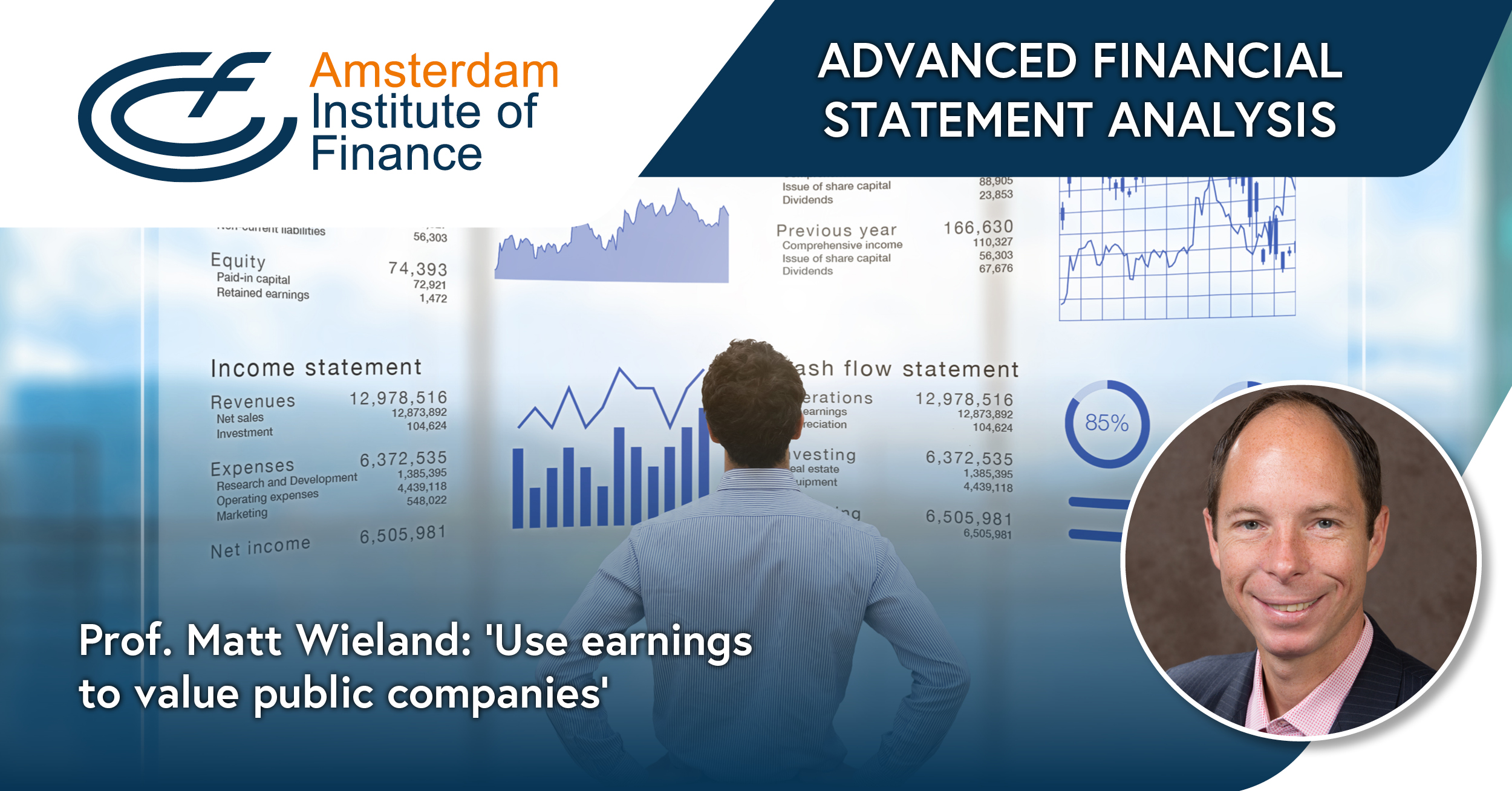
When most finance professionals calculate a public company’s value, they tend to focus on cash flows. Prof. Matt Wieland, who teaches the program on Advanced Financial Statement Analysis at the Amsterdam Institute of Finance, argues valuation methods based on earnings are at least as valuable as cash flow based models.
Why earnings matter in valuation
“What I love about earnings is that these are based on frameworks that have been set up by institutions like the IASB (International Accounting Standards Board) and the FASB (Financial Accounting Standards Board). There you have really intelligent people who have, over a long history, built these frameworks for how to measure net income. So while we all think this is the measure that’s supposed to capture the value that managers create, I find it interesting that a lot of people don’t use earnings to value a company.”
“While we all think net income is supposed to capture the value that managers create, I find it interesting that a lot of people don’t use earnings to value a company.”
Professor Matt Wieland, Miami University’s Farmer School of Business

Residual income models: a practical alternative
A residual income model, which is taught in Wieland’s class, is one way to do this. Using the book value of shareholder’s equity, the cost of capital, and forecasted net income, the model calculates a fair value for the share price. Done correctly, a cash flow based approach should give the same value, Wieland says. However, typically more adjustments will have to be done when using cash flows.
But is net income, especially a forecast of net income, not vulnerable to manipulation? Wieland points out residual income models have some built-in mechanisms for self-correction. “If you’re developing forecasts, and your earnings forecasts are too high because you’ve manipulated depreciation, that’s going to cause your earnings to be inflated. But those earnings flow into shareholder’s equity the next year. The higher shareholder’s equity causes your required earnings to be higher, which lowers the residual income.”
Detecting manipulation in financial statements
When it comes to identifying other forms of manipulation in financial statements, a good instrument is the Beneish Manipulation Score, says Wieland. “That’s an equation that you apply to eight measures from the financial statements. The output is a number which, when above a certain value, will suggest there’s something wrong, and that you should take a closer look. It gives a red flag of sorts, that you can use.”
An example of such an indicator is high sales growth. “Typically this will involve younger companies that do not have the adequate internal controls or accounting expertise in place to prevent manipulation or fraud. Moreover, when there has been a period of high sales growth, typically there will be the expectation the company should be able to keep that up, which incentivizes sales managers to do everything to maintain those.”
Another indicator this might be happening is when receivables are growing faster than sales. “When receivables are not being collected and keep stacking up, that could be the result of recognizing revenue that you aren’t actually going to collect.”
Wieland cautions that oftentimes there will be a benign reason for these kinds of anomalies. “It could be that the business has a great product that everybody wants. So, these models and the ratios that go with it all aren’t definitive. They just tell you where to look and to look a little bit deeper.”
“When you see how accounting works, you can use the financial statements to develop estimates and expectations about how a company is going to perform in the future, which you can then put into a valuation model.”
The importance of context in financial analysis
And, then, not everything is always outright fraud, he adds. “There’s this continuum from companies being as truthful and accurate as possible, maybe conservative even, to companies where managers are going to be optimistic causing them to report things that are maybe a little bit less accurate as they potentially could be, all the way down to the other end of the spectrum where you would have companies actually committing fraud.”
Generally, for finance professionals, being able to analyze financial statements is a very valuable skill, Wieland goes on. Companies publish a lot of data every quarter, and from this data a lot of insight can be gained about the way a business runs, makes money, and provides a return to its investors.
Adding value with financial statements
“If you’re able to connect the income statement to the balance sheet, you gain an understanding of how sales are going to need property, plant, equipment, and potentially some intangible assets. Next you think about how you are going to finance those assets through the debt and the equity structure. Ultimately all of that together is going to lead to a statement of cash flows.”
It also allows for an understanding of what is reasonable to expect from the future. “When you see how accounting works, you can use the financial statements to develop estimates and expectations about how a company is going to perform in the future, which you can then put into a valuation model”, Wieland concludes.
Prof. Matt Wieland teaches the Advanced Financial Statement Analysis program at Amsterdam Institute of Finance. Learn more & reserve your place here.